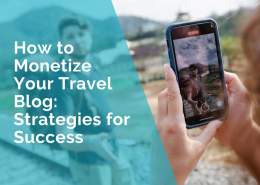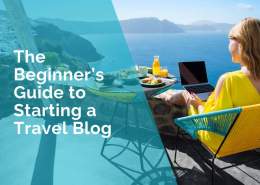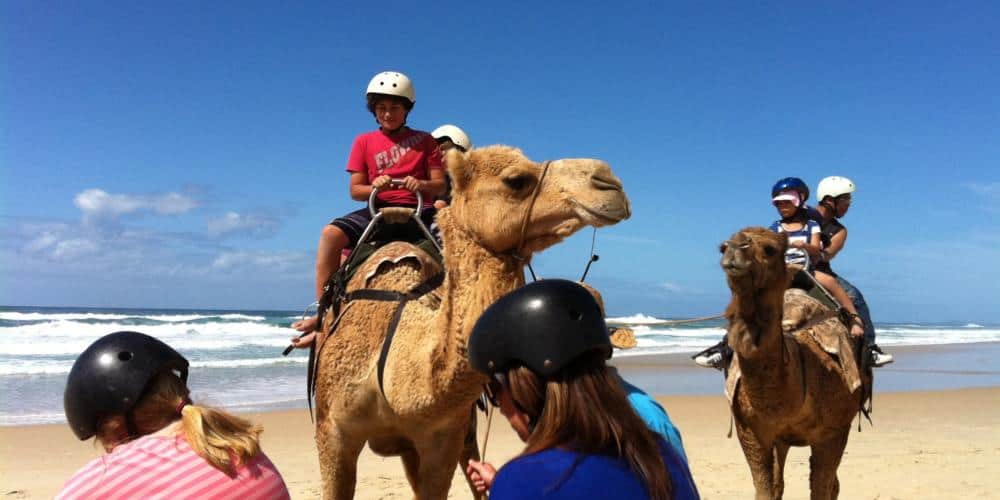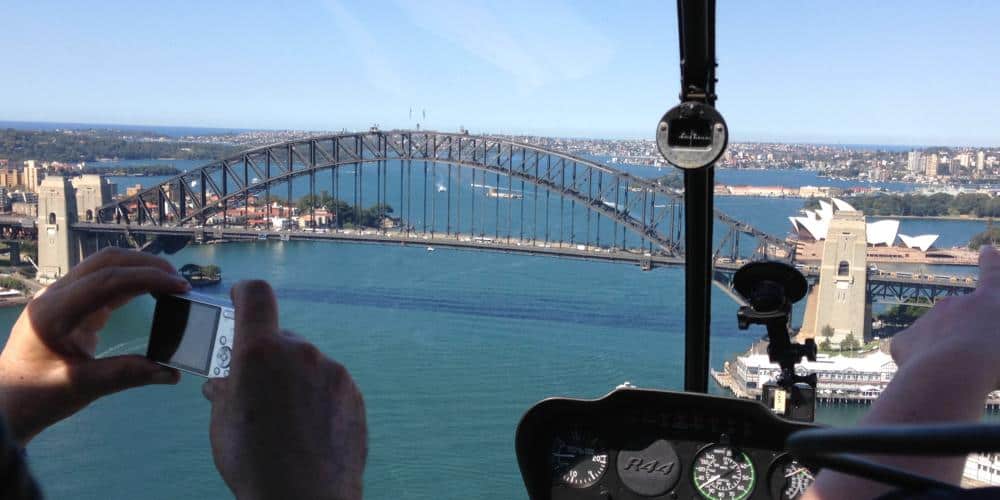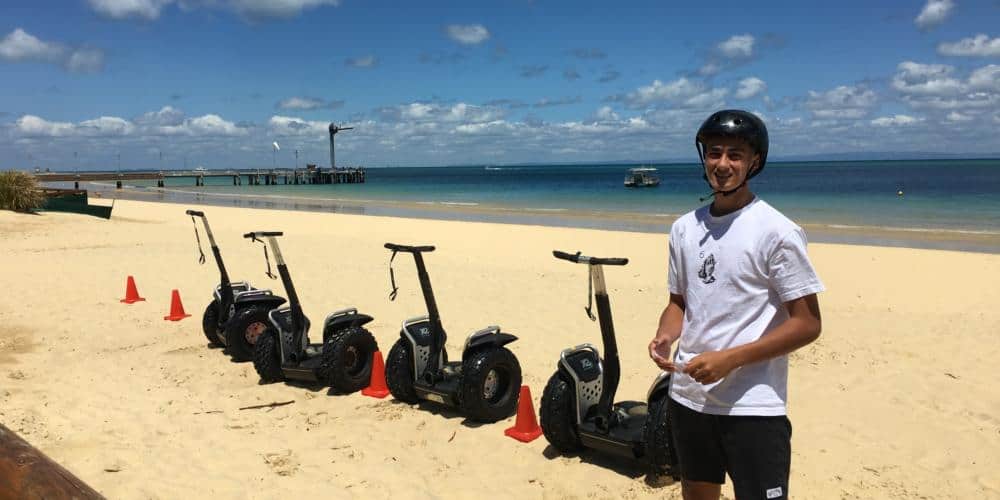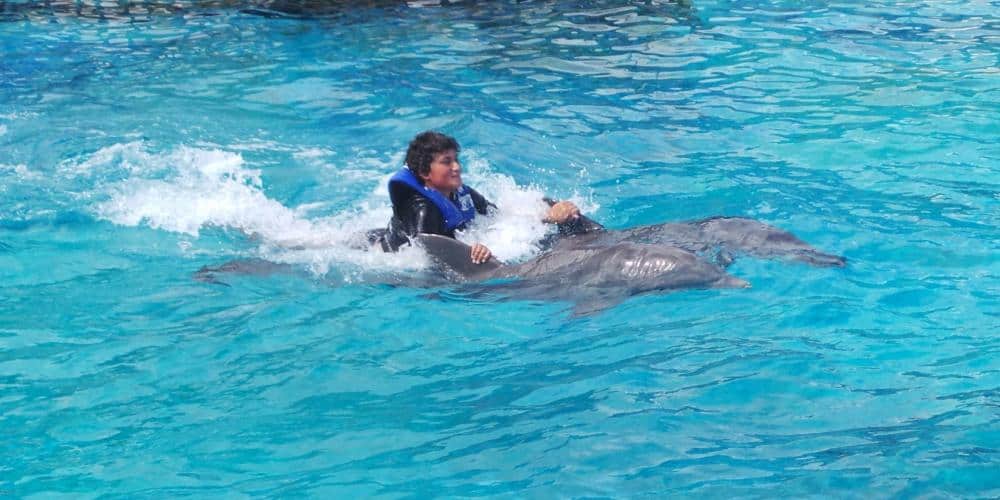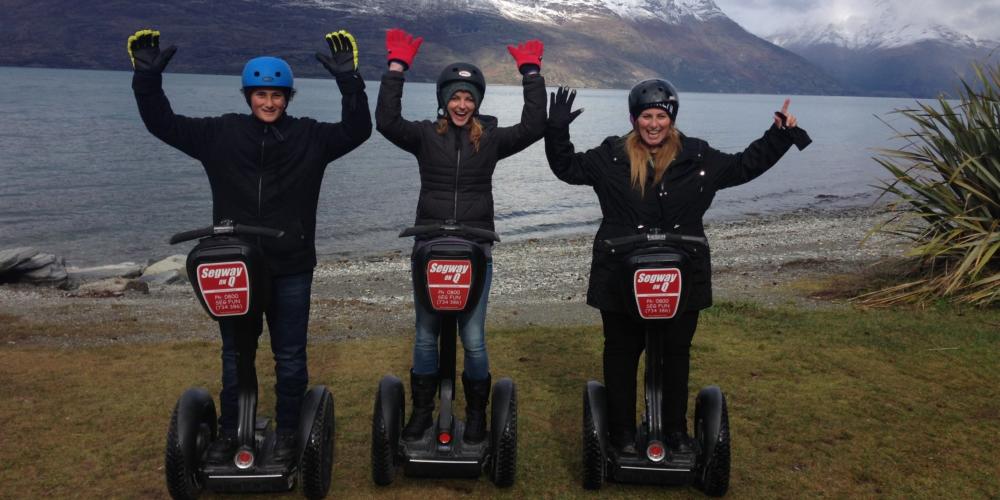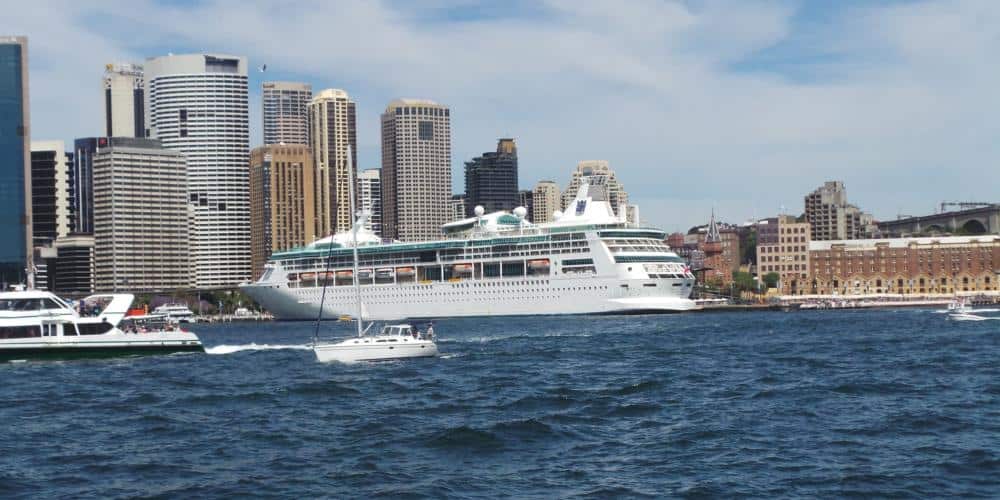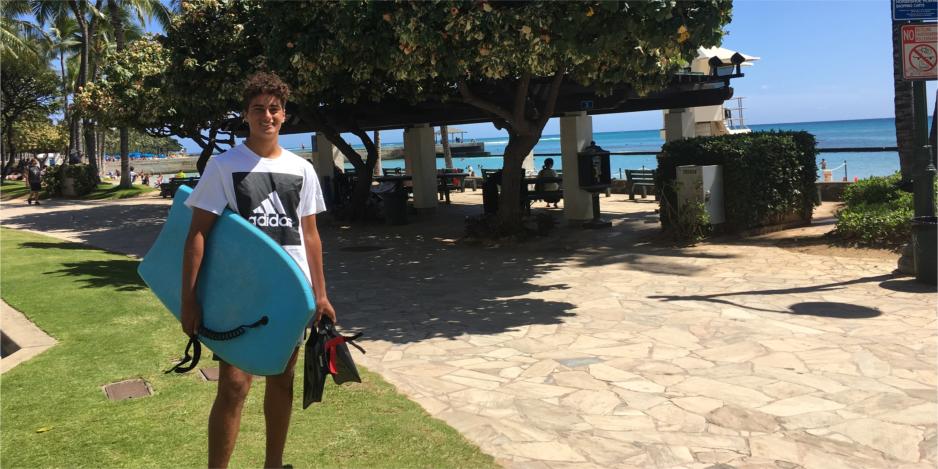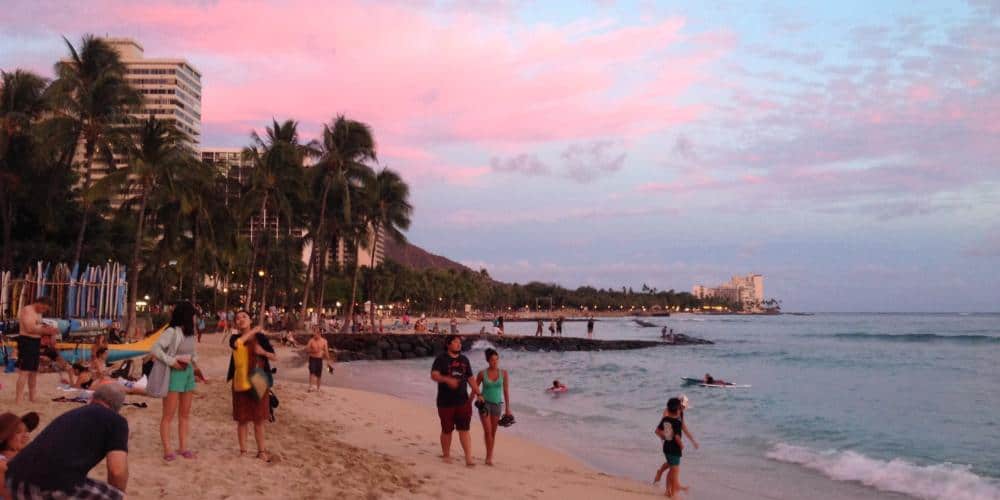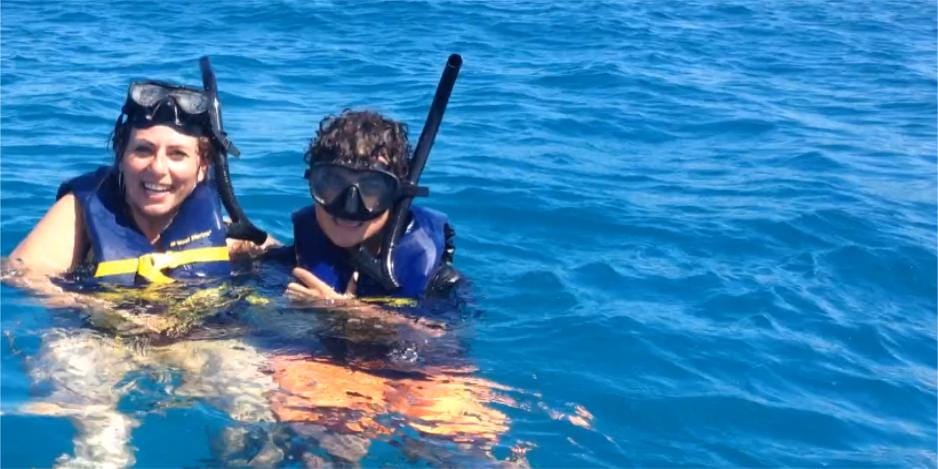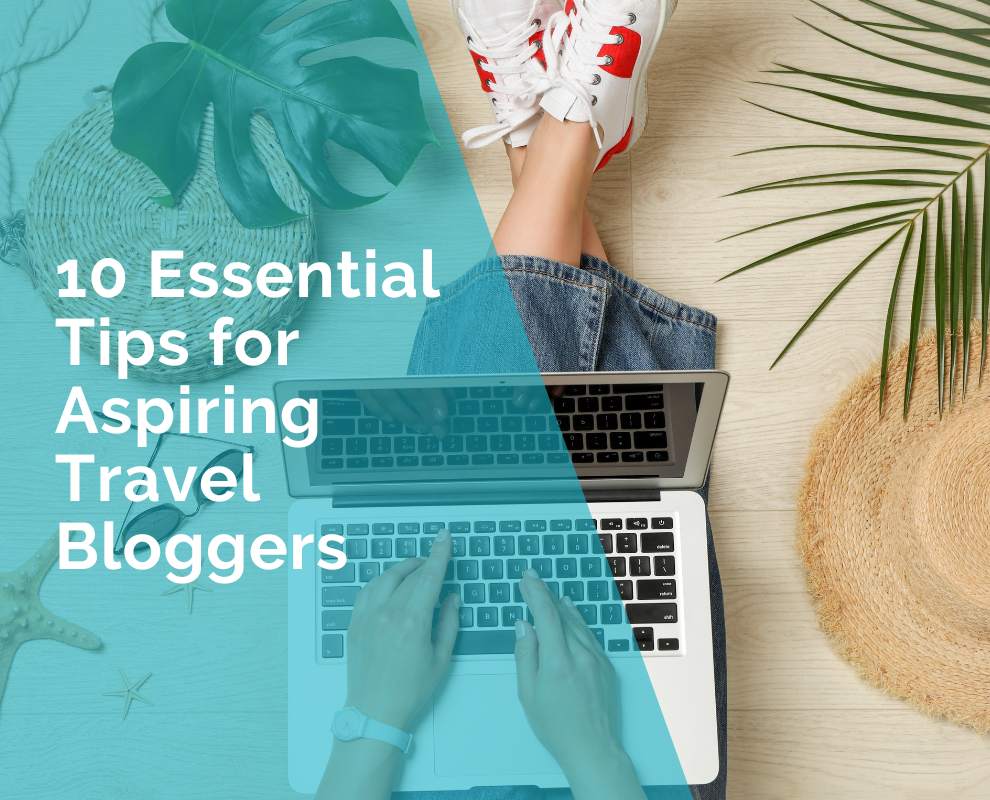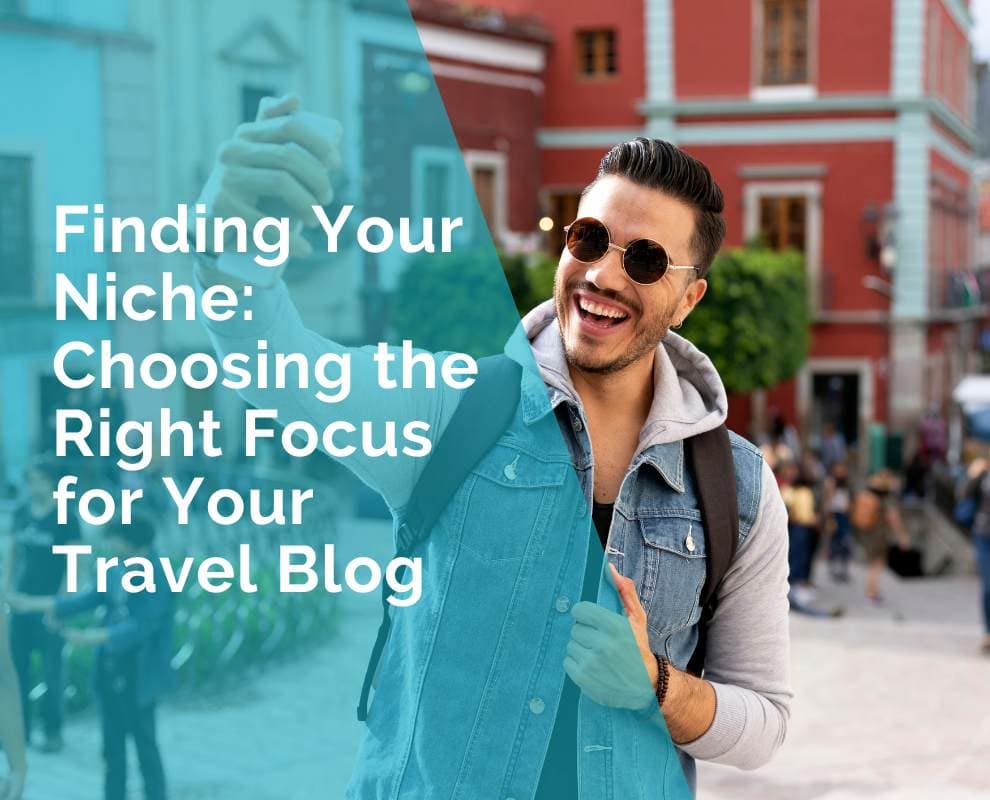Creating Compelling Content: Writing Tips for Travel Bloggers
When it comes to travel blogging, captivating your audience is key. Compelling content isn’t just about showcasing your adventures; it’s about painting a vivid picture that transports your readers to distant lands, stirs their wanderlust, and leaves them yearning for more. Your content is the window through which your audience experiences the world, making it crucial to capture their attention and imagination.
Think about it this way: Imagine you’re planning a trip to a new city, and you stumble upon two different blog posts about the same destination. One is filled with bland descriptions and generic recommendations, while the other is brimming with vivid anecdotes, stunning visuals, and practical advice. Which one would you be more likely to engage with? Chances are, you’d opt for the latter.
Compelling content not only keeps your readers engaged but also helps establish your credibility and authority as a travel blogger. It showcases your unique perspective, storytelling prowess, and expertise, setting you apart in a crowded online space.
1. Understanding Your Audience
Identifying target audience demographics and interests
Before you start crafting your travel blog content, it’s essential to know who you’re writing for. Identifying your target audience demographics and interests will help you tailor your content to their preferences and ensure that your blog resonates with them.
For example, suppose you’re targeting adventurous millennials who love off-the-beaten-path destinations and budget-friendly travel tips. In that case, your content will differ significantly from that aimed at luxury travelers seeking upscale accommodations and gourmet dining experiences.
To identify your target audience, consider factors such as age, gender, location, income level, travel preferences, and interests. You can gather this information through various methods, including surveys, analytics tools, social media insights, and feedback from your existing audience.
Once you have a clear understanding of your target audience, you can create content that speaks directly to their needs, interests, and aspirations, forging a stronger connection and driving engagement on your blog.
Researching popular travel topics and trends
Staying informed about popular travel topics and trends is crucial to keeping your content fresh, relevant, and engaging. By researching what’s trending in the travel industry, you can tap into the zeitgeist and create content that resonates with your audience’s interests and desires.
For example, suppose you notice a surge in interest in sustainable travel practices, digital nomad lifestyles, or solo female travel experiences. In that case, you can capitalize on these trends by creating content that addresses these topics from your unique perspective.
Keep an eye on travel industry publications, social media trends, Google Trends, and online forums to identify emerging topics and conversations within the travel community. Additionally, pay attention to seasonal trends, holidays, and special events that may influence travel patterns and interests.
Tailoring content to meet audience expectations
Once you’ve identified your target audience and researched popular travel topics and trends, it’s time to tailor your content to meet their expectations. Your audience has specific needs, preferences, and expectations when consuming travel content, and catering to these expectations is key to building a loyal readership.
For example, if your audience consists of adventure-seeking backpackers, they may expect your content to feature adrenaline-pumping activities, budget-friendly accommodation options, and insider tips for navigating off-the-beaten-path destinations.
On the other hand, if your audience comprises luxury travelers, they may expect high-end hotel reviews, gourmet dining experiences, and exclusive travel itineraries tailored to their discerning tastes.
2. Crafting Captivating Headlines and Introductions
Importance of headlines in grabbing reader attention
Your headline is the first impression you make on potential readers. It’s the gateway to your content, and its primary job is to grab attention and entice readers to click through and read more. In the fast-paced world of online content, a compelling headline can mean the difference between your post being ignored or going viral.
Imagine you’re scrolling through your social media feed, bombarded with a sea of posts competing for your attention. Which ones do you stop to click on? Likely the ones with headlines that pique your curiosity, promise valuable information, or evoke an emotional response.
Effective headlines are concise, attention-grabbing, and offer a clear benefit or promise to the reader. They can use techniques like posing questions, creating curiosity, offering solutions, or leveraging power words to generate interest and intrigue.
For example, consider these headlines:
“10 Hidden Gems in Europe You Need to Explore”
“How to Travel the World on a Budget: Insider Tips Revealed”
“The Ultimate Guide to Solo Female Travel: Empowerment and Adventure Await”
Each of these headlines offers a compelling reason for the reader to click through and discover more, whether it’s the promise of hidden travel gems, budget-saving tips, or empowering solo travel advice.
Techniques for writing engaging introductions
Once you’ve grabbed your reader’s attention with a compelling headline, it’s essential to hook them right from the start with an engaging introduction. Your introduction sets the tone for your content, establishes your voice and perspective, and draws readers in, encouraging them to keep reading.
One effective technique for writing engaging introductions is to start with a captivating anecdote or story that relates to the topic of your post. By sharing a personal experience or recounting a memorable travel moment, you can create an immediate connection with your audience and pique their curiosity.
For example, instead of jumping straight into a list of top travel destinations, you could begin your post with a vivid description of a transformative travel experience that inspired your passion for exploration.
Another technique is to pose a thought-provoking question or present a surprising fact that sparks curiosity and prompts readers to want to learn more. By tapping into your audience’s curiosity and desire for knowledge, you can draw them into your content and keep them engaged from the get-go.
Ultimately, your goal with the introduction is to establish a strong rapport with your readers, pique their interest, and set the stage for the valuable insights and information you’ll be sharing in the rest of your post.
Examples of effective headlines and introductions in travel blogging
Headline: “Discover the World’s Most Breathtaking Waterfalls: A Journey into Nature’s Majesty”
Introduction: “Standing at the edge of Victoria Falls, feeling the mist on your face as millions of gallons of water cascade into the abyss below, it’s impossible not to be awestruck by the sheer power and beauty of nature. In this guide, we’ll take you on a journey to explore some of the world’s most breathtaking waterfalls, from the towering heights of Angel Falls to the hidden gems tucked away in remote corners of the globe.”
Headline: “Unleash Your Inner Adventurer: 10 Thrilling Outdoor Activities to Try This Summer”
Introduction: “There’s something about the warm embrace of summer that beckons us to step outside our comfort zones and embrace adventure. Whether you’re a seasoned thrill-seeker or a novice explorer, there’s no shortage of heart-pounding outdoor activities to get your adrenaline pumping. From white-water rafting down roaring rapids to scaling towering rock faces, join us as we dive into 10 thrilling outdoor experiences guaranteed to ignite your sense of adventure.”
By studying and analyzing effective headlines and introductions in travel blogging, you can gain valuable insights into what resonates with readers and apply these techniques to your own content to capture attention and drive engagement.
3. Telling Stories Through Personal Experiences
Utilizing personal anecdotes to create relatable content
One of the most powerful tools in a travel blogger’s arsenal is the ability to weave personal anecdotes into their content. Sharing your own experiences not only adds authenticity and credibility to your writing but also helps create a deeper connection with your audience.
Think about it: When you read a blog post or article that’s filled with personal stories and anecdotes, you feel like you’re getting to know the author on a more personal level. You can relate to their experiences, empathize with their challenges, and share in their triumphs.
For example, imagine you’re reading a blog post about hiking the Inca Trail to Machu Picchu. Instead of just listing facts and practical tips, the author shares their own journey, describing the breathtaking views, the physical challenges they faced, and the sense of accomplishment they felt upon reaching the ancient ruins.
By incorporating personal anecdotes into your content, you not only make your writing more engaging and relatable but also provide valuable insights and inspiration to your readers, encouraging them to embark on their own adventures.
Incorporating sensory details to evoke emotions and imagery
When it comes to travel blogging, words are your paintbrush, and sensory details are your colors. By incorporating vivid descriptions of sights, sounds, smells, tastes, and textures, you can paint a rich and immersive picture that transports your readers to the destinations you’re writing about.
Consider the difference between these two descriptions:
“I visited a beautiful beach with white sand and clear blue water.”
“As I stepped onto the powdery white sand, the warm sun kissed my skin, and the gentle breeze carried the salty scent of the sea. The azure waters stretched out before me, inviting me to dive in and immerse myself in its cool embrace.”
Which one makes you feel like you’re actually there? The second description, of course! By incorporating sensory details, you can evoke emotions and imagery that resonate with your readers, making your content more immersive and memorable.
For example, when describing a bustling market in Marrakech, you might paint a picture of vibrant colors, exotic spices, and the rhythmic sounds of vendors calling out to passersby. Or when recounting a hike through a misty forest, you could evoke the damp earthy scent, the crunch of fallen leaves underfoot, and the eerie beauty of sunlight filtering through the canopy.
Balancing personal narrative with useful information for readers
While personal anecdotes are a powerful storytelling tool, it’s essential to strike a balance between sharing your own experiences and providing useful information and advice to your readers.
Imagine you’re reading a blog post about planning a trip to Japan. While it’s interesting to hear about the author’s adventures exploring Tokyo’s hidden alleyways and sampling street food delights, you also want practical tips on navigating the city, finding accommodation, and budgeting for your trip.
To strike this balance, weave personal anecdotes into your content in a way that complements the practical information you’re providing. For example, instead of just listing restaurant recommendations, share a personal story about stumbling upon a hidden gem sushi bar in Kyoto and the unforgettable dining experience that ensued.
By balancing personal narrative with useful information, you can create content that not only entertains and inspires but also empowers your readers to plan their own adventures with confidence and ease.
4. Utilizing Visuals Effectively
Importance of high-quality images and videos in travel blogging
In the realm of travel blogging, visuals are your secret weapon. High-quality images and videos not only enhance the visual appeal of your content but also play a crucial role in capturing and retaining your audience’s attention.
Consider this: When you’re planning your next vacation, what captures your interest more—a block of text describing a destination or a stunning photograph showcasing its beauty? Chances are, it’s the latter. Visuals have the power to evoke emotions, spark curiosity, and inspire wanderlust in ways that words alone cannot.
For example, imagine you’re browsing a travel blog and come across a series of breathtaking photographs showcasing the snow-capped peaks of the Swiss Alps, the bustling streets of Tokyo, or the sun-drenched beaches of Bali. These images transport you to these destinations, igniting a desire to experience them for yourself.
In addition to enhancing the aesthetic appeal of your content, high-quality visuals also lend credibility to your brand and help establish your authority as a travel expert. They showcase your attention to detail, your eye for beauty, and your commitment to providing valuable content to your audience.
Tips for capturing attention-grabbing visuals
Now that you understand the importance of visuals in travel blogging, let’s explore some tips for capturing attention-grabbing images and videos that will leave your audience wanting more.
Focus on composition:
Pay attention to composition techniques such as the rule of thirds, leading lines, and framing to create visually compelling images that draw the viewer’s eye.
Use natural light:
Whenever possible, shoot during the golden hours of sunrise and sunset to capture soft, flattering light that enhances the beauty of your subjects.
Highlight unique perspectives:
Look for unique angles, viewpoints, and vantage points to showcase familiar destinations in a fresh and interesting way.
Include people:
Adding human elements to your photos can help tell a story and create a sense of scale and perspective. Whether it’s locals going about their daily lives or fellow travellers exploring iconic landmarks, including people in your shots adds depth and authenticity to your content.
Experiment with different formats:
Don’t limit yourself to just photographs—experiment with other visual formats such as videos, GIFs, infographics, and drone footage to add variety and interest to your content.
Best practices for incorporating visuals into written content
While visuals are undoubtedly powerful on their own, they can be even more impactful when integrated seamlessly with your written content. Here are some best practices for incorporating visuals into your travel blog posts:
Use visuals to enhance storytelling:
Pair images and videos with your written narrative to create a multimedia experience that engages multiple senses and enhances the storytelling process.
Break up text with visuals:
Long blocks of text can be overwhelming for readers, so break up your content with visually appealing images and videos to improve readability and retention.
Provide context:
When including visuals in your content, provide context and captions that explain their relevance to the topic at hand. Whether it’s a photo of a famous landmark, a mouth-watering food dish, or a breathtaking landscape, help your readers understand why it’s significant and how it ties into your story.
Optimize for speed and accessibility:
Ensure that your images and videos are optimized for fast loading times and accessible to all users, including those with disabilities. Compress large files, use descriptive alt text for images, and provide captions or transcripts for videos to make your content more inclusive and user-friendly.
5. Adding Value with Practical Information
Providing practical tips and advice for travellers
As a travel blogger, one of your primary goals is to provide valuable information and advice to your audience to help them plan and enhance their travel experiences. By offering practical tips and insights, you can empower your readers to make informed decisions, navigate unfamiliar destinations with ease, and maximize their enjoyment of their adventures.
Consider this scenario: You’re planning a trip to Paris, and you stumble upon a travel blog post that offers insider tips on navigating the city’s public transportation system, avoiding tourist traps, and finding hidden gems off the beaten path. These practical tips not only save you time and money but also enhance your overall experience by enabling you to explore the city like a local.
When providing practical tips and advice for travelers, think about the challenges and pain points they may encounter during their journeys and offer solutions and recommendations to address them. Whether it’s packing tips, money-saving strategies, safety precautions, or cultural etiquette guidelines, providing actionable advice adds value to your content and establishes you as a trusted resource for your audience.
Researching and including useful resources and recommendations
In addition to offering your own insights and expertise, it’s essential to research and include useful resources and recommendations in your travel blog content to enrich the reader experience further. By curating a selection of trusted resources, tools, and recommendations, you can save your audience time and effort and provide them with access to valuable resources they may not have discovered on their own.
For example, suppose you’re writing a blog post about planning a backpacking trip through Southeast Asia. In that case, you could include links to budget accommodation websites, transportation booking platforms, local tour operators, and travel apps that can help streamline the planning process and enhance the travel experience.
When researching and including resources and recommendations in your content, prioritize quality over quantity and ensure that the resources you’re endorsing align with your brand values and audience preferences. Whether it’s travel guidebooks, online forums, travel gear reviews, or destination-specific websites, choose resources that are reputable, reliable, and relevant to your audience’s needs and interests.
Balancing inspiration with practicality in travel content
While inspiration is essential in travel blogging, it’s equally important to balance it with practicality and realism to provide value to your audience. While dreamy destination photos and wanderlust-inducing narratives can spark excitement and inspiration, they must be complemented by practical advice and information that empowers your readers to turn their travel dreams into reality.
Imagine you’re reading a blog post about hiking the Inca Trail to Machu Picchu. While the author’s vivid descriptions of the breathtaking scenery and awe-inspiring ruins are captivating, you also want practical tips on how to prepare for the trek, what to pack, and how to acclimate to the altitude.
To strike this balance, intersperse your inspirational content with actionable advice, tips, and recommendations that address your audience’s practical needs and concerns. Whether it’s budgeting advice, itinerary suggestions, packing lists, or safety tips, provide your readers with the tools and information they need to plan and execute their travel adventures successfully.
By striking the right balance between inspiration and practicality in your travel content, you can inspire your audience to dream big while equipping them with the knowledge and resources to turn those dreams into reality.
6. Engaging with Your Audience
Encouraging reader interaction through comments and social media
Engaging with your audience is essential for building a thriving community around your travel blog. Encouraging reader interaction through comments and social media not only fosters deeper connections with your audience but also enhances the overall reader experience.
Imagine you’re browsing through a travel blog post about exploring the vibrant streets of Barcelona. As you scroll through the article, you notice a section at the end inviting readers to share their own experiences, tips, and recommendations in the comments. Intrigued, you decide to chime in and share your favorite hidden gem restaurant in the city, sparking a lively conversation with fellow readers.
By actively soliciting and responding to comments on your blog posts, you create a space for meaningful dialogue and exchange of ideas among your audience. Encourage readers to share their own travel stories, ask questions, and offer insights, and be sure to respond promptly and thoughtfully to foster engagement and community.
Similarly, leverage social media platforms such as Instagram, Facebook, Twitter, and Pinterest to connect with your audience, share your content, and engage in conversations. Use hashtags, polls, contests, and interactive features to encourage participation and make your audience feel valued and included.
Responding to reader questions and feedback
When readers take the time to leave comments, ask questions, or offer feedback on your blog posts, it’s essential to acknowledge and respond to them promptly and courteously. Responding to reader questions and feedback not only demonstrates your appreciation for their engagement but also helps build trust and credibility with your audience.
Imagine you’re planning a trip to Japan, and you come across a travel blog post offering tips on navigating Tokyo’s bustling subway system. After reading the post, you have a question about purchasing a transportation pass, so you leave a comment seeking clarification. To your delight, the author responds within hours, providing detailed information and even offering additional tips for getting around the city.
By being responsive and helpful in your interactions with readers, you show that you’re genuinely invested in their travel experiences and eager to support them in any way you can. Whether it’s answering questions, addressing concerns, or simply thanking readers for their feedback, every interaction is an opportunity to strengthen your connection with your audience.
Building a sense of community among readers
Beyond individual interactions, strive to foster a sense of community among your readers by creating opportunities for them to connect with each other and share their experiences. Building a community around your travel blog not only enriches the reader experience but also creates a loyal and engaged audience that keeps coming back for more.
Consider hosting live Q&A sessions, virtual meetups, or group challenges where readers can interact with you and with each other in real-time. Create dedicated social media groups or forums where readers can share travel tips, ask questions, and connect with like-minded adventurers.
Additionally, feature reader stories, testimonials, and photos on your blog and social media channels to showcase the diverse experiences and perspectives within your community. By highlighting reader contributions, you not only celebrate their achievements but also inspire others to join the conversation and become part of your travel tribe.
7. Editing and Polishing Your Content
Importance of proofreading and editing for clarity and professionalism
Proofreading and editing are the final steps in the content creation process, but they’re perhaps the most crucial. These tasks ensure that your writing is clear, concise, and error-free, enhancing professionalism and credibility.
Consider this: You’re reading an article about the latest technology trends, but you keep getting distracted by typos, grammatical errors, and awkward phrasing. Despite the valuable information it contains, the lack of polish diminishes its impact and credibility in your eyes.
By meticulously proofreading and editing your content, you demonstrate attention to detail and a commitment to quality, which instills trust and confidence in your readers. Whether you’re a seasoned professional or a novice writer, taking the time to polish your content can make all the difference in how it’s received.
Techniques for revising and improving content flow
Improving the flow of your content is essential for keeping readers engaged and ensuring that your message resonates effectively. Here are some techniques for revising and enhancing content flow:
Read aloud:
Reading your content aloud can help you identify awkward phrasing, repetitive language, and inconsistencies in tone and style. Listen for natural rhythm and cadence, and make adjustments as needed to improve readability.
Use transitions:
Transition words and phrases (e.g., “however,” “in addition,” “furthermore”) help guide readers through your content and connect ideas smoothly. Use them to signal shifts in topic, introduce new points, or provide context for the reader.
Trim the fat:
Cut unnecessary words, phrases, and sentences that don’t add value to your content or contribute to your main message. Keep sentences clear and concise, and avoid unnecessary repetition or verbosity.
Organize logically:
Structure your content in a logical and intuitive manner, with clear headings, subheadings, and signposts to guide the reader through the information. Use bullet points, numbered lists, and paragraph breaks to break up dense text and improve readability.
Tools and resources for enhancing writing quality
Fortunately, there are numerous tools and resources available to help you enhance the quality of your writing and streamline the editing process. Here are some valuable tools to consider:
Grammarly:
Grammarly is a popular writing assistant that checks for grammar, spelling, punctuation, and style errors in your content. It offers suggestions for improvement and helps you maintain consistency and clarity in your writing.
Hemingway Editor:
Hemingway Editor highlights complex sentences, passive voice, adverbs, and other readability issues in your writing, making it easier to identify areas for improvement and simplify your prose.
Style guides:
Style guides such as the AP Stylebook, Chicago Manual of Style, and MLA Handbook provide guidelines for formatting, punctuation, grammar, and citation style. Consult these guides to ensure consistency and adherence to industry standards in your writing.
Peer review:
Seek feedback from trusted colleagues, mentors, or writing groups to get fresh perspectives on your content and identify blind spots or areas for improvement. Constructive criticism can help you refine your writing and elevate its quality.
8. Optimizing Content for SEO
Understanding the basics of SEO for travel blogging
SEO, or Search Engine Optimization, is a critical aspect of travel blogging that helps your content rank higher in search engine results, making it more visible to potential readers. Understanding the basics of SEO is essential for increasing your blog’s visibility and attracting more traffic.
Think of SEO as a roadmap that helps search engines like Google understand what your content is about and rank it accordingly. By optimizing your content for relevant keywords and following best practices, you can improve your chances of appearing at the top of search engine results pages (SERPs) when users search for topics related to your content.
For example, suppose you’re writing a blog post about budget-friendly travel tips for backpackers in Southeast Asia. By conducting keyword research and incorporating phrases like “budget travel Southeast Asia,” “backpacking tips,” and “cheap accommodation,” you increase the likelihood of your content being discovered by users searching for these topics.
In addition to keyword optimization, other SEO factors such as page load speed, mobile-friendliness, and backlink quality also play a role in determining your search engine rankings. By understanding these basics and implementing SEO best practices, you can increase your blog’s visibility and attract more organic traffic over time.
Incorporating relevant keywords and phrases naturally
While incorporating keywords is essential for SEO, it’s crucial to do so in a way that feels natural and organic within your content. Keyword stuffing—repeatedly inserting keywords into your content in an unnatural or spammy way—can harm your SEO efforts and detract from the reader experience.
Instead, focus on seamlessly integrating relevant keywords and phrases into your content in a way that enhances readability and adds value to your audience. Consider using long-tail keywords—more specific phrases that target niche topics or audience queries—to attract highly targeted traffic and improve your chances of ranking for specific search queries.
For example, instead of targeting a broad keyword like “travel tips,” you might optimize your content for long-tail keywords like “family-friendly travel tips for Europe” or “solo female travel advice for Southeast Asia.” These targeted phrases are more likely to attract users with specific interests and intentions, leading to higher engagement and conversion rates.
When incorporating keywords into your content, prioritize relevance, context, and user intent. Ensure that your keywords appear naturally within your headings, subheadings, meta tags, and body copy, and avoid over-optimizing or sacrificing readability for the sake of SEO.
Tips for improving search engine visibility and driving traffic
In addition to keyword optimization, there are several other strategies you can employ to improve your blog’s search engine visibility and drive more traffic:
Create high-quality content:
Focus on producing valuable, informative, and engaging content that addresses your audience’s needs, interests, and pain points. Quality content is more likely to attract backlinks, social shares, and organic traffic over time.
Optimize meta tags:
Write compelling meta titles and descriptions that accurately summarize your content and entice users to click through to your blog. Include relevant keywords naturally within your meta tags to improve your chances of ranking in search results.
Optimize images:
Use descriptive file names, alt text, and captions for your images to improve accessibility and provide additional context for search engines. Optimized images can appear in image search results, driving additional traffic to your blog.
Build backlinks:
Earn backlinks from reputable websites within the travel industry and related niches to improve your blog’s authority and credibility in the eyes of search engines. Guest posting, influencer collaborations, and participation in online communities are effective strategies for building backlinks.
Promote your content:
Share your blog posts on social media, participate in online forums and communities, and leverage email marketing to promote your content and attract more visitors to your blog. Increased social shares and engagement can signal to search engines that your content is valuable and worthy of higher rankings.
By implementing these SEO strategies and best practices, you can optimize your travel blog for search engines, improve your visibility in search results, and attract more organic traffic over time. Remember that SEO is a long-term investment, and results may take time to manifest, so stay patient and consistent in your efforts.
Mastering the art of travel blogging involves a multifaceted approach that encompasses compelling storytelling, audience engagement, and search engine optimization. By crafting captivating content that resonates with your audience, fostering meaningful interactions, and optimizing your blog for search engines, you can create a dynamic and thriving online presence that attracts and retains loyal readers. Whether you’re sharing personal anecdotes from your adventures, providing practical tips and advice, or optimizing your content for SEO, each element plays a crucial role in building a successful travel blog. By continuously honing your craft, staying abreast of industry trends, and listening to feedback from your audience, you can elevate your travel blogging game and inspire others to embark on their own journeys of exploration and discovery.
 ***
***
Ivana Katz is a Sydney based website designer and travel blogger. Having her own business has given her the freedom to explore the world. She believes travel is the best teacher and her passion for adventure, writing and photography has taken her and her son to some amazing places, including Hawaii, Canada, Fiji, Greece and Czech Republic. Ivana’s favourite thing about travelling is learning, discovering hidden gems and creating memories. She loves nothing more than inspiring other women to chase their dreams and explore the world with their families and friends.
Frequently Asked Questions
What makes content compelling for travel bloggers?
Compelling content for travel bloggers is engaging, informative, and evocative. It tells captivating stories, provides valuable insights and recommendations, and inspires readers to explore new destinations and experiences.
How can I find inspiration for my travel blog content?
Inspiration for travel blog content can come from a variety of sources, including personal experiences, cultural insights, current events, reader feedback, and trending topics within the travel industry. Keep an open mind, stay curious, and explore new places and perspectives to fuel your creativity.
What role do headlines play in creating compelling content?
Headlines are crucial for grabbing reader attention and enticing them to click on your content. Compelling headlines are clear, concise, and attention-grabbing, offering a glimpse of what readers can expect from the rest of the article.
How can I make my introductions more engaging?
Engaging introductions set the tone for your content and draw readers in from the start. Techniques for writing engaging introductions include starting with a question, sharing a personal anecdote, or presenting a surprising fact or statistic to pique curiosity.
What are some effective storytelling techniques for travel bloggers?
Effective storytelling techniques for travel bloggers include incorporating personal anecdotes, using descriptive language to evoke emotions and imagery, and creating a narrative arc that keeps readers engaged from beginning to end.
How can I balance personal narrative with practical information in my content?
Balancing personal narrative with practical information involves weaving your own experiences into your content while also providing useful tips, advice, and recommendations that add value to your readers’ travel experiences.
What role do visuals play in creating compelling travel content?
Visuals such as high-quality images and videos enhance the visual appeal of your content and help transport readers to the destinations you’re writing about. They evoke emotions, spark curiosity, and inspire readers to explore further.
How can I incorporate visuals effectively into my written content?
Incorporating visuals effectively involves strategically placing images and videos throughout your written content to complement your narrative, break up text, and enhance the reader experience. Use visuals to illustrate key points, evoke emotions, and provide context for your stories.
What types of personal experiences should I share in my travel blog?
Share personal experiences that are relevant to your audience and align with your blog’s niche and theme. Whether it’s an adventurous trek, a cultural immersion, or a culinary discovery, share experiences that resonate with your readers and offer valuable insights and inspiration.
How can I ensure my content is informative and useful for readers?
Ensure your content is informative and useful by conducting thorough research, providing practical tips and advice, and addressing common questions and concerns that your audience may have. Offer insights and recommendations that help readers plan and enhance their own travel experiences.
What are some common pitfalls to avoid when creating travel content?
Common pitfalls to avoid include over-promotion of sponsored content, neglecting to disclose affiliate relationships, copying content from other sources, and sacrificing authenticity for the sake of SEO optimization. Focus on creating original, high-quality content that adds value to your audience.
What should I do if I encounter writer’s block?
If you encounter writer’s block, take a break, step away from your computer, and engage in activities that inspire creativity and relaxation. Take a walk, explore a new place, read a book, or try a different form of creative expression to refresh your mind and perspective.


